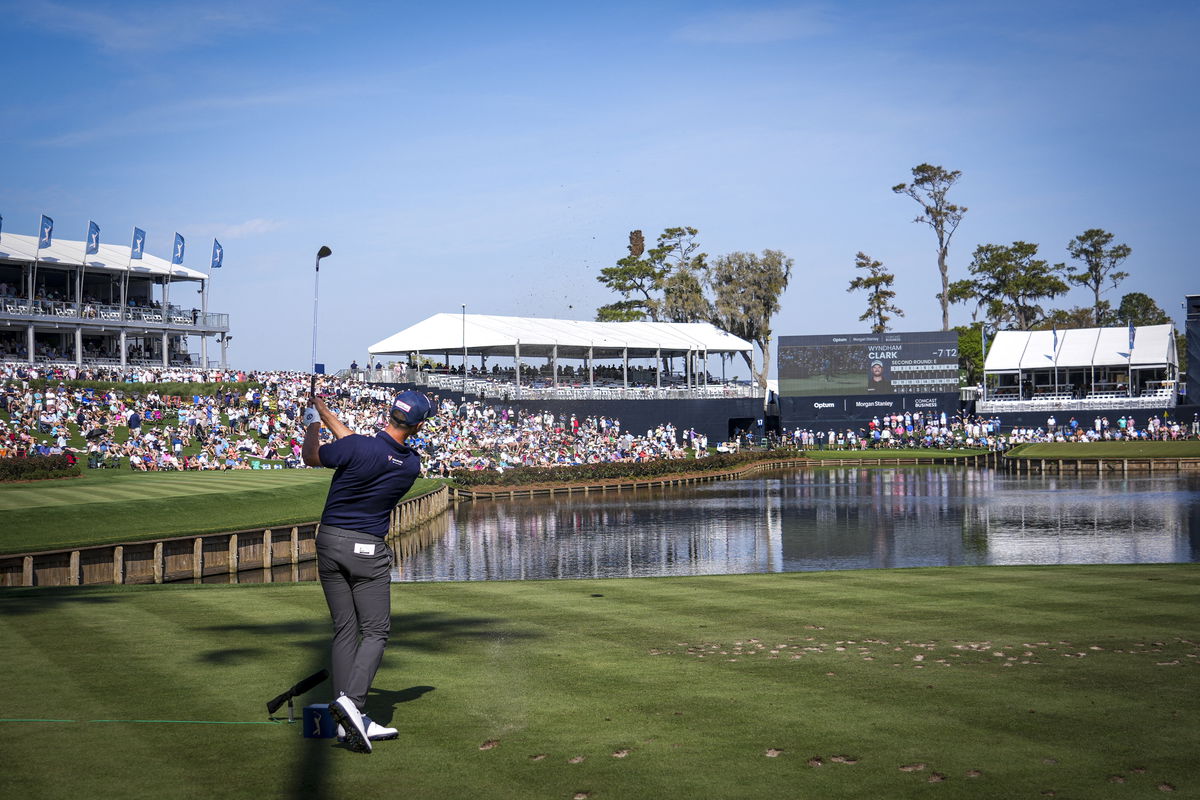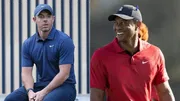

The first event of the PGA Tour playoffs brought plenty of surprises. Be it Rory McIlroy’s absence or Tommy Fleetwood’s 43rd top-10 finish without a win, continuing a streak no one expected him to maintain. But while those storylines were grabbing attention, the St. Jude Championship broadcast itself became a talking point, thanks to a brand-new feature meant to enhance the viewing experience.
Watch What’s Trending Now!
The PGA Tour’s latest innovation, the drone tracer technology, made its playoff debut. This new feature, known as AR (augmented reality) smart tracing, tracks the path of tee shots and changes colors based on where the ball is expected to end up. While the tech was designed to give viewers a fresh perspective, it quickly sparked a backlash from fans. Still, the team behind the project is confident it will become a key part of future golf coverage.
Earlier this season, CBS had been praised for shaking up its golf broadcasts. Now, NBC, which aired the St. Jude Championship, is finding itself on the other side of the conversation. On the Fried Egg Golf podcast, analysts Joseph LaMagna, Brendan Porath, and CJ Clark did not hold back on the new tech’s playoff debut. The discussion began with a quirky stat: no FedEx Cup champion has gone on to win the next FedEx event. While it took the panel a few attempts to confirm its accuracy, the real focus quickly shifted to NBC’s new drone tracer. Clark didn’t mince words, calling it “The dumbest thing to hit exist in the history of golf broadcasting.”
ADVERTISEMENT
Unlike traditional ball tracers that follow the ball’s path, the drone tracer predicts where the ball will land immediately after impact. But according to the panel, those predictions often missed the mark or created unnecessary confusion. Porath cited Justin Rose’s shot as an example: “What I interpreted it to be was Justin Rose had hit it in the water. It was bright red like Hurricane Rosie, and it landed safely, but I got ratios for saying it’s supposed to be in the fairway. So, it’s right, it didn’t go in the fairway.”
LaMagna agreed, suggesting a new color scheme to improve clarity. Yellow for a safe landing, red for a penalty area. Despite supporting the tech’s potential, he also fueled the criticism with his own X post reading, “NBC telecast is so brutal.” Well, this isn’t the first time the tour has tried to introduce new tech for a better viewership experience. Earlier, Top Tracer, TrackMan, and Hawk-Eye were introduced by the tour, which was a totally new kind of experience.
NBC telecast is so brutal
— Joseph LaMagna (@JosephLaMagna) August 9, 2025
ADVERTISEMENT
Yet, this isn’t the only tech the Tour has introduced this year. At the Players Championship, the PGA TOUR rolled out AI-powered shot commentary within TOURCAST, their digital shot tracker. This feature delivers real-time narrative context for every shot, detailing not just the distance but also what the shot meant strategically. It launched using generative AI integrated via AWS Bedrock and ShotLink data
So, while the backlash for new tech is immense right now, and it is also in its early stages, the team aims to make it a vital part of their broadcasts. Additionally, an interesting personality supports this innovation and hints at the future of drone technology.
ADVERTISEMENT
Top Stories
Greg Norman Takes Credit for Scottie Scheffler’s $195M Earnings as He Sends Message to PGA Tour CEO

LPGA Pro Shocks Commentators With Rare Move at CME Group Tour Championship

Tour Pro Hit With Brutal 5-Month Punishment Only 11 Days After Celebrating Career Feat

Brooke Henderson Sets the Season Finale Tone With Unreal Putt at CME Group Tour Championship R1

Rory McIlroy Leaves Tiger Woods Behind With Unique Record No Golfer Has Ever Achieved

Despite backlash during the broadcast, Turnbull predicts the future
The pushback hasn’t shaken the PGA Tour’s confidence. Alex Turnbull, the Tour’s Vice President of Production Technology, still sees the drone tracer as a game-changer. Developed in collaboration with CBS, NBC, and three companies—Bolt6, Virtual Eye, and Kaze Aerial Production—the system builds on the Emmy Award-winning broadcast technology already in use.
Jon Freedman, the PGA Tour’s Senior VP of Media Broadcasting, acknowledged that some would resist the change: “You’re going to have a few naysayers of, ‘Hey, it’s taking the suspense away.’” And indeed, those naysayers made themselves heard after the first playoff event.
ADVERTISEMENT
But Turnbull countered the criticism, explaining, “You want it to enhance the drama. And I think the way I’ve looked at it is it’s not so much a prediction. Having the perspective of the drone that shows you a different angle of the course than you’ve ever seen before, and seeing the entirety of a hole in the perspective of a player hitting a shot, and then adding this color context, that’s just real-time feedback. It’s not taking away the drama; it’s becoming part of the story.”
For now, though, the color cues—green for safe, red for trouble—seem to be adding as much confusion as clarity. Whether drone tracer technology becomes a broadcast staple or fades away will depend on how quickly NBC and the PGA Tour can fine-tune the experience.
ADVERTISEMENT
ADVERTISEMENT
ADVERTISEMENT

